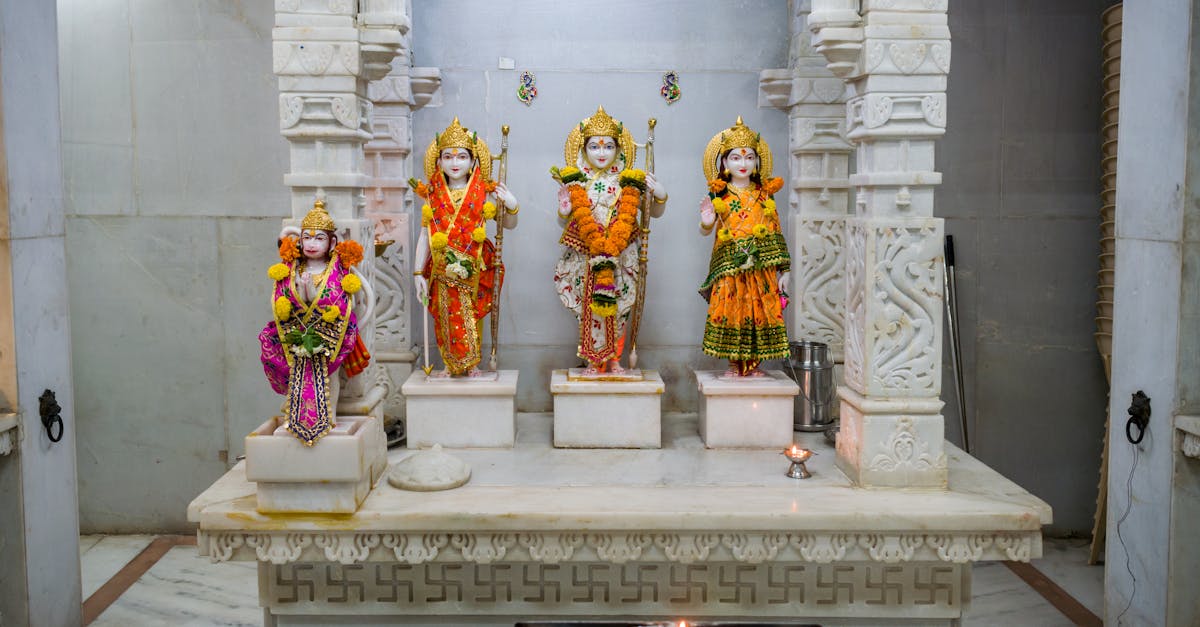# 10 Must-Visit Places in Ayodhya for a Memorable One-Day Trip
Ayodhya, a city steeped in history and spirituality, is known for its significant cultural heritage and serene landscapes. With a rich tapestry of temples, rivers, and monuments, this sacred city offers a plethora of experiences for visitors. If you find yourself in Ayodhya for just a day, fret not! We have compiled a list of the ten must-visit places that will make your trip unforgettable. Let’s dive into the highlights of Ayodhya.
| Place | Description |
|---|---|
| Ram Janmabhoomi | The birthplace of Lord Rama, a site of immense religious significance. |
| Hanuman Garhi | A temple dedicated to Lord Hanuman, situated on a hilltop. |
| Nageshwarnath Temple | A famous temple dedicated to Lord Shiva, rich in history. |
| Kanak Bhawan | A beautiful temple built for Lord Rama and Goddess Sita. |
| Treta Ke Thakur | A significant site believed to be the place where Lord Rama performed the Ashwamedha Yagna. |
| Sita Ki Rasoi | A historic site where it is believed that Sita cooked for Lord Rama. |
| Dashrath Bhawan | The palace of King Dashrath, showcasing ancient architecture. |
| Surya Kund | A sacred pond believed to have healing properties. |
| Rama Ki Paidi | A picturesque ghat along the Sarayu River, perfect for relaxation. |
| Guptar Ghat | A serene ghat where Lord Rama is believed to have left for his heavenly abode. |
Ram Janmabhoomi
Ram Janmabhoomi is the revered birthplace of Lord Rama and holds a central place in the hearts of millions of devotees. The site is home to the grand Ram Temple, which is currently under construction and is expected to be a magnificent architectural marvel. Visitors can feel the spiritual energy resonating in this sacred space, making it a must-visit for anyone in Ayodhya.

Hanuman Garhi
Perched on a hilltop, Hanuman Garhi is a temple dedicated to Lord Hanuman. The temple is a popular pilgrimage site and requires a climb of about 76 steps to reach the shrine. The panoramic views of the surrounding area from the temple are breathtaking, and the tranquil atmosphere adds to the spiritual experience.

Nageshwarnath Temple
Nageshwarnath Temple is one of the oldest temples in Ayodhya, dedicated to Lord Shiva. This temple is believed to have been built by Lord Rama’s son, Kush. The temple’s architecture is a stunning representation of ancient design, and it attracts both devotees and history enthusiasts alike.

Kanak Bhawan
Kanak Bhawan is a beautiful temple dedicated to Lord Rama and Goddess Sita. Built by the Queen of Tikamgarh, the temple is adorned with intricate carvings and vibrant murals. The serene atmosphere and the exquisite architecture make it a perfect place for worship and reflection.

Treta Ke Thakur
This site is believed to be where Lord Rama performed the Ashwamedha Yagna. Treta Ke Thakur features a temple that commemorates this significant event in Hindu mythology. The serene environment and the historical importance of this site make it a must-visit for anyone interested in the rich cultural heritage of Ayodhya.
Sita Ki Rasoi
Sita Ki Rasoi, or Sita’s Kitchen, is an ancient site where it is believed that Goddess Sita cooked for Lord Rama. This site holds immense cultural significance and provides insight into the lifestyle of the characters from the Ramayana. The atmosphere here is infused with history, making it a fascinating stop on your Ayodhya journey.
Dashrath Bhawan
Dashrath Bhawan is the palace of King Dashrath, Lord Rama’s father. The architectural style of this historical site reflects the grandeur of ancient Indian palaces. Visitors can explore the remnants of this palace and imagine the royal life that once thrived here, making it a captivating destination for history lovers.
Surya Kund
Surya Kund is a sacred pond that is believed to have healing properties. It is a popular spot for pilgrims who come to take a holy dip. The tranquil environment surrounding the kund offers a peaceful respite from the bustling city, making it an ideal place for relaxation and reflection.
Rama Ki Paidi
Rama Ki Paidi is a picturesque ghat along the banks of the Sarayu River. This spot is perfect for a peaceful stroll, allowing visitors to soak in the serene beauty of Ayodhya. The ghat is especially lively during festivals when devotees gather to perform rituals and offer prayers.
Guptar Ghat
Guptar Ghat is a serene location associated with the legend of Lord Rama’s departure to his heavenly abode. The ghat offers a tranquil setting for meditation and reflection. Many visitors come here to pay their respects and experience the peaceful ambiance that envelops the area.
FAQ
What is the best time to visit Ayodhya?
The best time to visit Ayodhya is during the winter months from October to March when the weather is pleasant and ideal for sightseeing. The summer months can be quite hot, while the monsoon season may lead to heavy rainfall, affecting travel plans.
How can I reach Ayodhya?
Ayodhya is well-connected by road and rail. The nearest railway station is Faizabad, which is about 7 km away from Ayodhya. There are also regular bus services from major cities like Lucknow and Varanasi.
Is there an entry fee for the temples in Ayodhya?
Most temples in Ayodhya do not have an entry fee; however, some may have charges for special rituals or pujas. It is advisable to check at each temple for any specific rules.
What should I wear when visiting temples in Ayodhya?
Visitors are expected to dress modestly when visiting temples. It is recommended to wear traditional attire or clothing that covers the shoulders and knees out of respect for the religious sentiments of the devotees.
Are there any accommodations available in Ayodhya?
Yes, Ayodhya offers a range of accommodations from budget hotels to luxury stays. It is advisable to book in advance, especially during peak pilgrimage seasons.
References:
– [Ayodhya Tourism](http://ayodhya.gov.in)
– [Uttar Pradesh Tourism](https://uptourism.gov.in)
